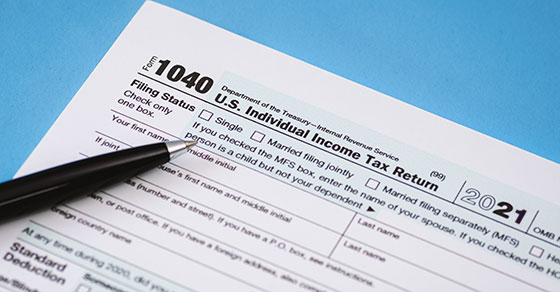Despite the robust job market, there are still some people losing their jobs. If you’re laid off or terminated from employment, taxes are probably the last thing on your mind. However, there are tax implications due to your changed personal and professional circumstances. Depending on your situation, the tax aspects can be complex and require you to make decisions that may affect your tax picture this year and for years to come.
Unemployment and severance pay
Unemployment compensation is taxable, as are payments for any accumulated vacation or sick time. Although severance pay is also taxable and subject to federal income tax withholding, some elements of a severance package may be specially treated. For example:
- If you sell stock acquired by way of an incentive stock option (ISO), part or all of your gain may be taxed at lower long-term capital gain rates rather than at ordinary income tax rates, depending on whether you meet a special dual holding period.
- If you received — or will receive — what’s commonly referred to as a “golden parachute payment,” you may be subject to an excise tax equal to 20% of the portion of the payment that’s treated as an “excess parachute payment” under very complex rules, along with the excess parachute payment also being subject to ordinary income tax.
- The value of job placement assistance you receive from your former employer usually is tax-free. However, the assistance is taxable if you had a choice between receiving cash or outplacement help.
Health insurance
Also, be aware that under the COBRA rules, most employers that offer group health coverage must provide continuation coverage to most terminated employees and their families. While the cost of COBRA coverage may be expensive, the cost of any premium you pay for insurance that covers medical care is a medical expense, which is deductible if you itemize deductions and if your total medical expenses exceed 7.5% of your adjusted gross income.
If your ex-employer pays for some of your medical coverage for a period of time following termination, you won’t be taxed on the value of this benefit. And if you lost your job as a result of a foreign-trade-related circumstance, you may qualify for a refundable credit for 72.5% of your qualifying health insurance costs.
Retirement plans
Employees whose employment is terminated may also need tax planning help to determine the best option for amounts they’ve accumulated in retirement plans sponsored by former employers. For most, a tax-free rollover to an IRA is the best move, if the terms of the plan allow a pre-retirement payout.
If the distribution from the retirement plan includes employer securities in a lump sum, the distribution is taxed under the lump-sum rules except that “net unrealized appreciation” in the value of the stock isn’t taxed until the securities are sold or otherwise disposed of in a later transaction. If you’re under age 59½, and must make withdrawals from your company plan or IRA to supplement your income, there may be an additional 10% penalty tax to pay unless you qualify for an exception.
Further, any loans you’ve taken out from your employer’s retirement plan, such as a 401(k)-plan loan, may be required to be repaid immediately, or within a specified period. If they aren’t, they may be treated as if the loan is in default. If the balance of the loan isn’t repaid within the required period, it will typically be treated as a taxable deemed distribution.
Contact us so that we can chart the best tax course for you during this transition period.
© 2022






